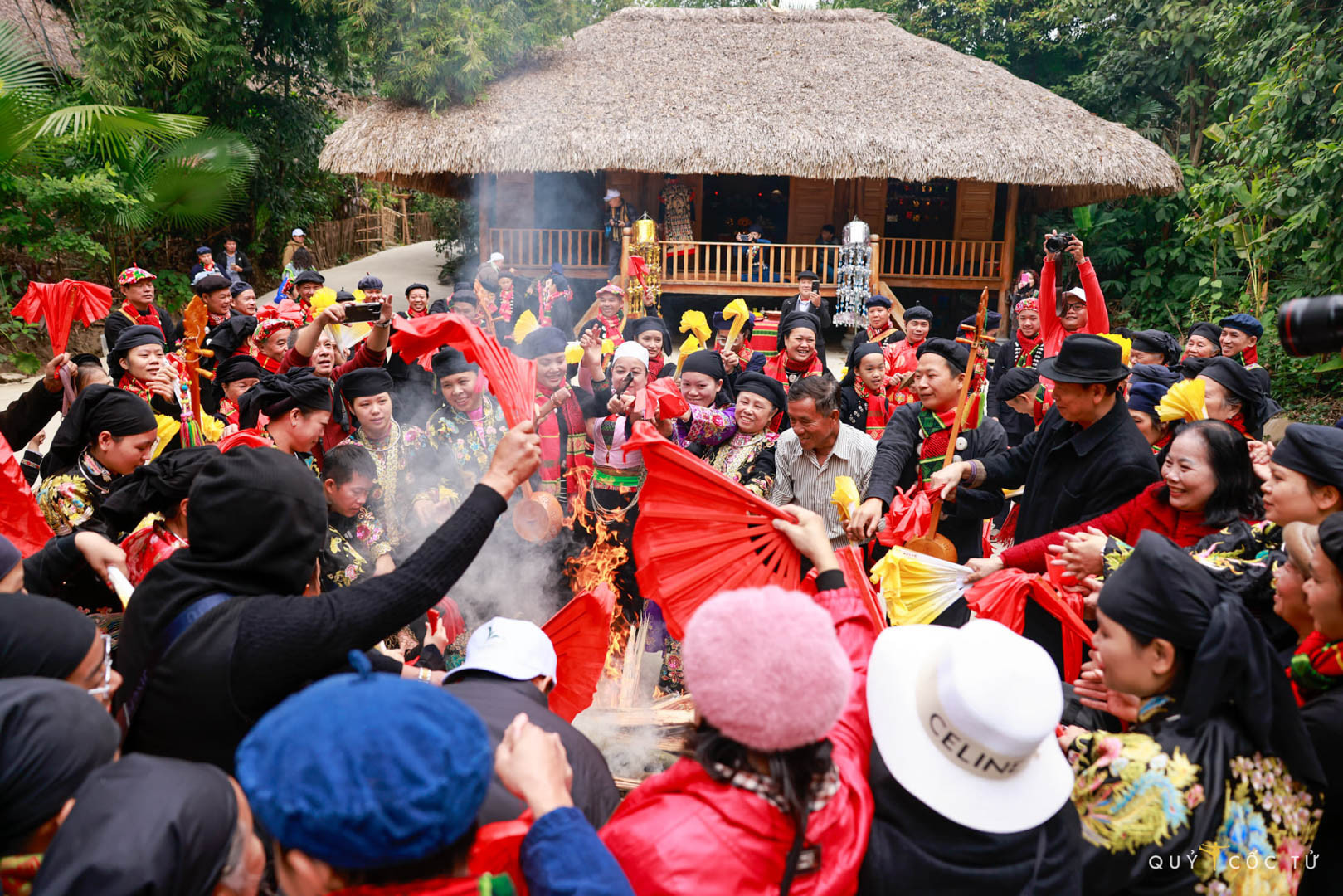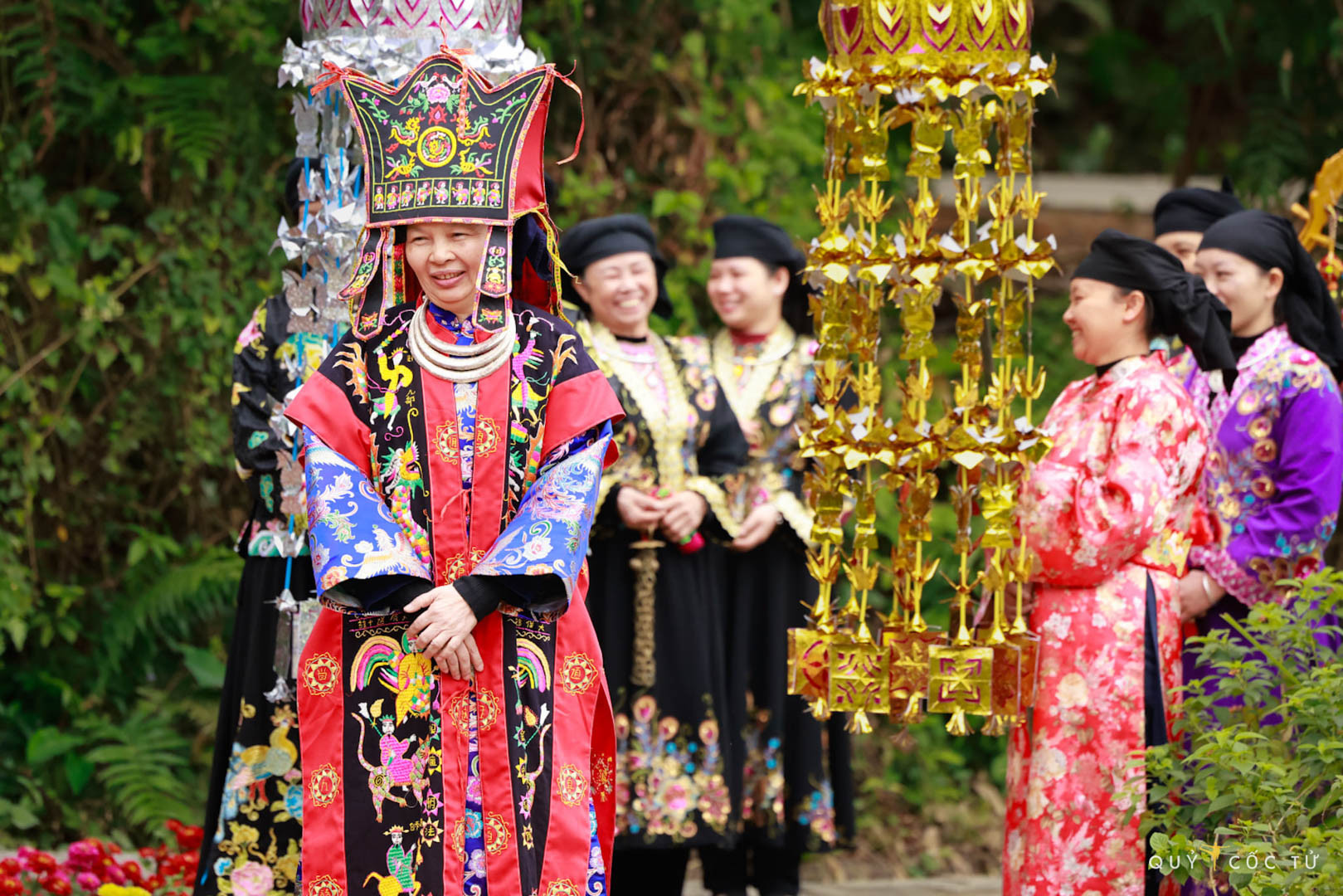
Many hamlets and villages in Vietnam are becoming hotspots for domestic and international tourists. To preserve cultural identity, enhance landscapes, and craft memorable tourism experiences, locals have established unique "village rules" and unite to follow them.
Ngo Tran Hai An (Quy Coc Tu), is a renowned Vietnamese photojournalist, photographer, and travel blogger. He has visited all 63 provinces in Vietnam and over 40 countries, capturing and sharing stunning images and experiences.
Below is Ngo Tran Hai An’s fascinating story about the Thai Hai Ethnic Stilt House Village Ecological Reserve in Thai Nguyen:
To me, Thai Hai is Vietnam’s most peculiar village. The Thai Hai Ethnic Stilt House Village Ecological Reserve was named "world’s best tourism village 2022" by the United Nations Tourism Organization. Located about 70km from Hanoi and 10km from Thai Nguyen city center, it sits along the Nui Coc Lake tourism route, and Tan Cuong tea cultural area.
In Thai Hai village in Thinh Duc commune, around 200 residents live together. They eat together, share belongings, and contribute all earnings to the village fund—no one outshines or resents another. All unite in solidarity, love, and daily mutual support.
I couldn’t believe such a village still existed in the 21st century until I visited, explored, and heard its captivating stories.
Thai Hai is Thai Nguyen’s first private tourism area recognized as a local tourism site.
Over 15 years ago, Nguyen Thi Thanh Hai - a Tay culture enthusiast - set out to build this ethnic cultural reserve. She pooled all her savings to buy 30 authentic Tay and Nung stilt houses from Dinh Hoa, relocating them to My Hao, including ones nearly a century old.
She also tirelessly rallied Tay and Nung families to settle here together. They live closely, like one family. Their daily tasks include planting trees, growing vegetables and tea, farming, and engaging in tourism while preserving their ethnic traditions.
Hai, the village head, set intriguing "rules": each person does just one job—expert herders herd, skilled economists handle finances, good communicators manage visitors, experienced healers treat the village, and adept brewers make rice wine for all.

At 5 am every day, the village gong rings, waking everyone for work. Men stoke fires and sharpen tools, women fetch water from the well and brew tea. After a shared breakfast, each heads to their task—some gather firewood, grow veggies, raise poultry or pigs, fish, or greet tourists, while kids go to class.
What stuns visitors is that all earnings go into the village’s shared fund. The head manages all expenses—from personal to essential needs, food, healthcare, recreation, and schooling—for every household.
Even transport is communal. Need a vehicle? Register, and the logistics team hands one from the village stock.
The village head decides all major matters in Tha iHai. Everyone follows the head’s arrangements without rivalry or complaint.
Visitors to Thai Hai can join locals in planting veggies, picking tea, building stilt houses, net-fishing, or pounding sticky rice dances—gaining insight into native life—then savor dishes like khau nhuc (steamed pork belly), lon quay (roasted pork), oc xao mang chua (sour bamboo snail stir-fry), and canh ga nau me (sour chicken soup), alongside oddities from peanut sprouts, bamboo worms, and grasshoppers.
What impresses tourists most about Thai Hai is its preservation and promotion of Tay ethnic traditions in Thai Nguyen. Kids learn the Tay language from grandparents and parents. At six, they study Then singing, Tinh guitar, and con tossing games.
Rituals like ancestor worship, field blessings, and new rice celebrations persist across generations.
I was lucky to attend the village’s Gratitude to Heaven and Earth ceremony. Locals busily prepared offerings—candies, fruits, wine, banh gai (ramie leaves rice cakes), roasted pork—for ancestors and spirits, thanking heaven, earth, gods, and each other for birth, connection, and good deeds.
I’ve joined many festivals, but this was the most authentic and heartwarming. Thai Hai’s simplicity and humanity urge me to return soon. It’s truly a must-visit destination.
Linh Trang